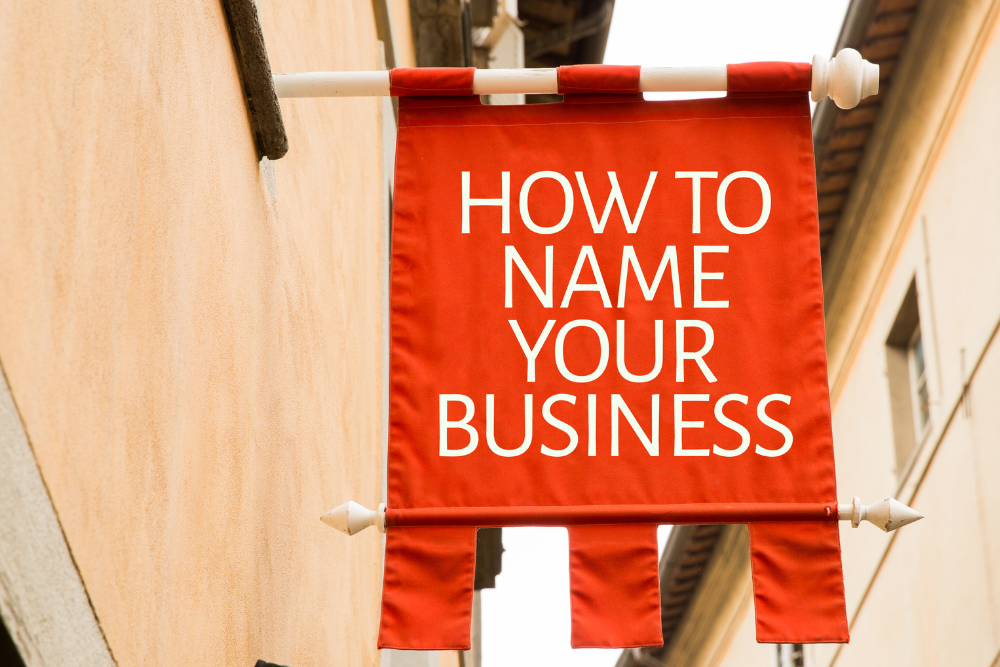Choosing the perfect business name is one of the most critical decisions you’ll make as a business owner. It’s the first impression potential clients have of your brand, and it sets the tone for your overall identity.
As a business coach, I’ve seen many entrepreneurs struggle with this process. Whether you’re launching a new business or rebranding, your business name should resonate with your audience, reflect your values, and support long-term growth.
In this blog, I’ll share my top strategies for creating a business name that enhances your brand identity and drives success.
Why Your Business Name Matters
Your business name is more than just a label—it’s a marketing tool, a branding element, and a reflection of your mission.
1. Sets the First Impression: A strong name sparks interest and curiosity, making people want to learn more about what you offer.
2. Communicates Value: The right name conveys the essence of your business, whether it’s trust, innovation, or reliability.
3. Enhances Marketing and SEO: Including keywords in your name improves search engine rankings and helps prospects find your business online.
4. Builds Emotional Connections: A memorable name creates an emotional link with your audience, increasing brand loyalty.
1. Know Your Brand Identity
Before brainstorming names, define your brand identity. Consider the following questions:
- What products or services do you offer?
- Who is your target audience?
- What values and emotions do you want your brand to evoke?
- What differentiates you from competitors?
For example, Possibilities Unlimited focuses on growth, empowerment, and transformation. A name aligned with these values reinforces the brand’s mission.
2. Brainstorm Creative Ideas
Once you have a clear understanding of your brand, it’s time to brainstorm potential names.
Tips for Brainstorming:
- Keep it short, simple, and easy to spell.
- Avoid overly complicated words or obscure references.
- Use word associations, synonyms, and metaphors for inspiration.
- Think about emotional triggers—words that inspire trust, excitement, or curiosity.
- Visualize how the name will look in a logo or on marketing materials.
Example: A construction consulting firm might use names like “Blueprint Success” or “Foundation Strategies” to communicate reliability and planning.
3. Use Descriptive Keywords
Incorporate keywords related to your industry to boost SEO and clarify what you offer.
For example:
- A coaching business can use words like “growth,” “success,” or “momentum.”
- A branding agency might focus on words like “design,” “image,” or “identity.”
- Adding keywords improves visibility in online searches, helping potential clients find you faster.
4. Get Feedback from Others
Once you have a list of potential names, test them out.
Ways to Gather Feedback:
- Conduct surveys with your target audience.
- Ask family, friends, or trusted colleagues for their impressions.
- Host polls on social media to gauge reactions.
5. Verify Name Availability
Before finalizing your name, check its availability:
- Search for trademarks using the U.S. Patent and Trademark Office database.
- Check domain availability for your website.
- Reserve matching social media handles to ensure consistency.
Tip: If your preferred name is taken, consider slight variations or adding a tagline to keep the identity intact.
6. Incorporate Branding Strategies
Think about how the name fits into your branding strategy.
- Visual Impact: Does the name lend itself to a strong logo or slogan?
- Memorability: Can people recall it easily after hearing it once?
- Scalability: Will the name still fit if you expand into new markets or product lines?
What About Digital Business Cards?
In addition to traditional branding strategies, consider using digital business cards to reinforce your identity and make it easy for prospects to connect with you.
What Are Digital Business Cards?
Digital business cards allow you to share your contact information electronically via QR codes, email, or mobile apps.
Benefits:
- Easily updated to reflect changes in your contact details or branding.
- Environmentally friendly, reducing paper waste.
- Interactive, linking directly to your website, LinkedIn profile, or booking page.
How to Use Digital Business Cards:
- Include QR codes on printed cards for seamless access to your online profile.
- Use them at networking events and follow-ups for quick connections.
- Integrate them into your email signature for ongoing visibility.
Frequently Asked Questions About Business Naming
How long should my business name be?
Short and simple names (1–3 words) are easier to remember and fit better in logos and branding materials.
- What if the domain name I want is taken?
Consider adding words like “coaching,” “solutions,” or “group” to the name to create variations that work. - Can I change my business name later?
While possible, changing your name requires rebranding and updating marketing materials, so choose a name that can grow with your business. - Should I trademark my business name?
Yes, trademarking your name protects it legally and prevents competitors from using it. - How can I make my name memorable?
Focus on simplicity, emotional appeal, and uniqueness. Test it with potential clients to ensure it resonates.
What Clients Are Saying
Bobby Miranda, VP of Sales at SuperD shares his experience: “Ralph has been coaching our company for a number of years and helped us with extraordinary results in growing our sales team. During that time we have had 25% increases in sales year over year.
Claim Your Complimentary Coaching Session
Ready to take the next step in building your brand identity? I am offering a complimentary 1/2 hour coaching session to help you brainstorm, refine, and finalize the perfect name for your business. Schedule your session and start building a brand that truly reflects your vision.




